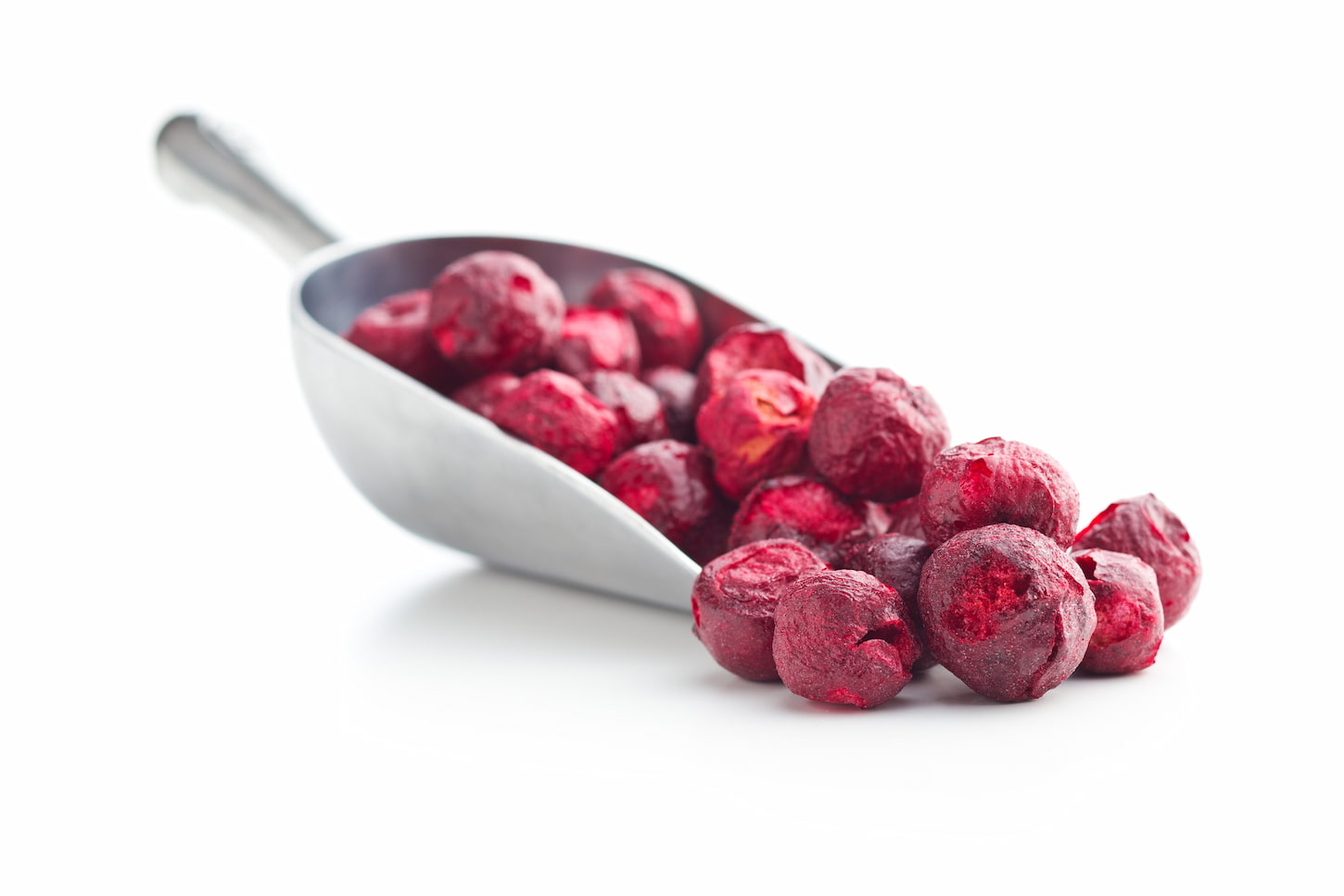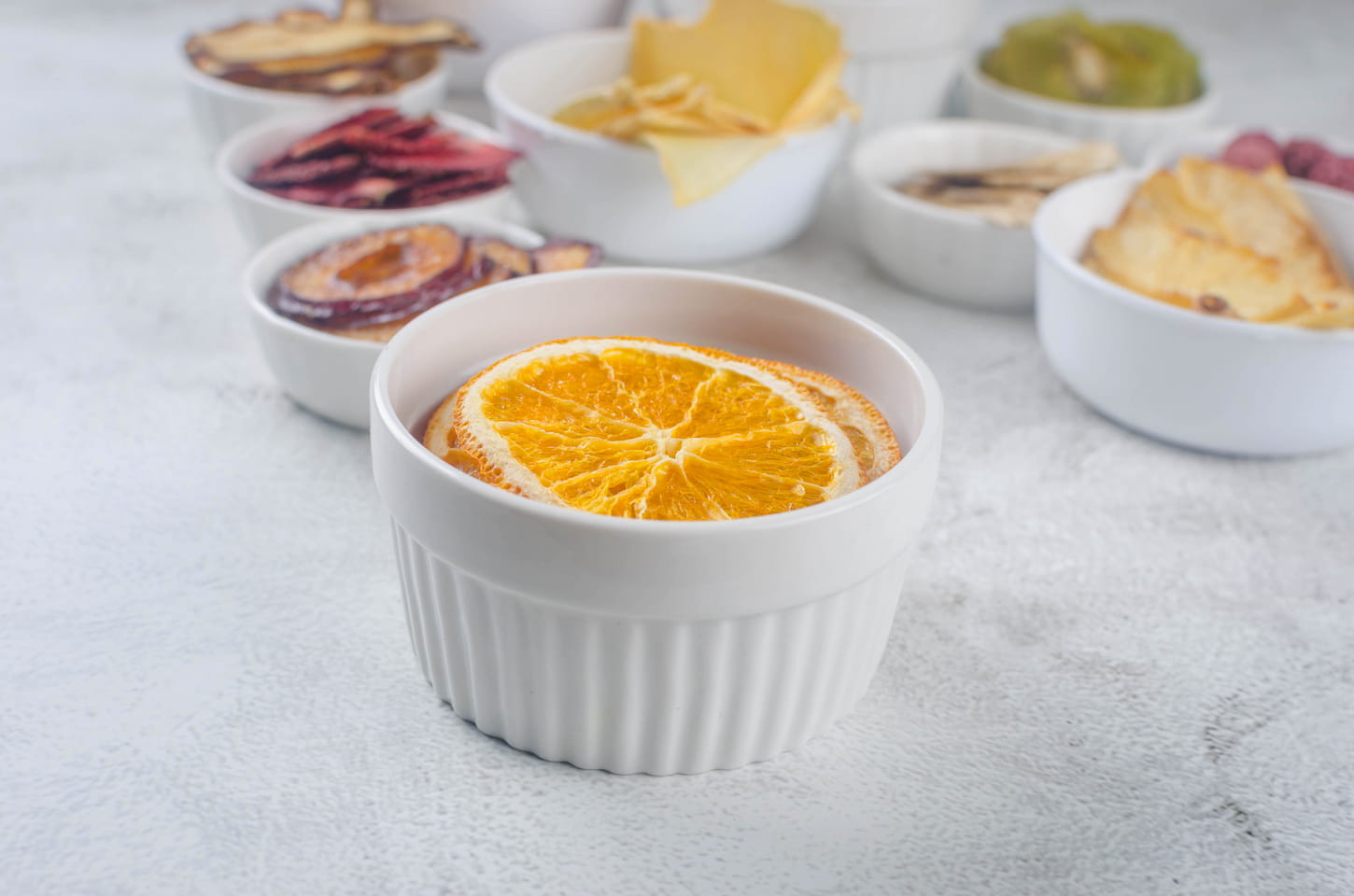Freeze-drying has been around for a long time, but it has become increasingly popular in the last few years. In fact, it’s become more popular since the pandemic, as people are reminded it’s good to prepare for any situation.
The most significant advantage of freeze-drying food is it creates shelf-stable food for up to 25 years, and the food will retain its original nutrition, texture, and quality. The biggest disadvantage of freeze-drying is the cost of the machine, which can be several thousand dollars.
If someone is anticipating the future and wants to start a food store, they might be wondering what the benefits and drawbacks are of freeze-drying.
A Freeze-drying machine can bring many benefits to the home or homestead and save money overall. If you’re interested in learning more about the advantages and disadvantages of home freeze-drying, we’ve listed them here in this guide.

What are the Effects of Freeze-Drying?
Freeze-drying is also known as lyophilization, which is the process of freezing and dehydrating food in a vacuum chamber. In a freeze-dryer, food is frozen quickly, under low pressure, so the frozen moisture turns directly to vapor without melting first, which is known as sublimation.
When moisture is removed from food with sublimation, the food retains almost all its quality and texture. This is unlike standard freezing, where the water inside food expands and causes damage to the cell walls – which affects the taste, quality, and texture of food.
Freeze-drying preserves food because once the food is completely dried out, bacteria, mold, and pathogens can’t live on it. If we store freeze-dried food correctly (sealed and away from humidity), then it can last up to 25 years or potentially more.
We don’t have to refrigerate freeze-dried food, and when rehydrating it – soak it in water for as little as 10 minutes or as long as overnight to reconstitute and rehydrate it.
Now, this is the short version of the science behind freeze-drying. Would you like to know more in-depth about the scientific process of freeze-drying? Then, read this article I wrote: How Do Home Freeze Dryers Work? Science and Process Made Easy.
What Are the Advantages of Freeze-Drying?
Freeze-drying is the best way to store food long-term and is shelf-stable. Freeze-dried food is lightweight, convenient to transport, and easy to rehydrate back to its original form. Once rehydrated, freeze-dried food looks, tastes, and is nutritionally nearly just like the original product.
Freeze-drying is becoming increasingly popular here in the USA, and it’s easy to see why when we look at the many advantages it can bring to our homes.
If you’re looking to get your own Harvest Right freeze-dryer, you can click this link to shop current sales.
Freeze-dried food retains most of its original quality and nutrients
Freeze-dried food retains around 97 percent of its original nutrients – unlike other preservation methods like canning, which keeps about 40 percent of its nutrients, and dehydrating, which keeps 60 percent.
Freeze-dried food keeps most of its fiber and antioxidants, but it can lose between 3 and 23 percent of vitamins and minerals.
Most nutrient loss in freeze-dried food doesn’t come from the freeze-drying process – it usually occurs before drying or storage. If we blanch vegetables before freeze-drying, for example, they will have fewer nutrients than fresh ones.
Freeze-dried food is almost as healthy as fresh food, and it’s just as tasty too. When you rehydrate freeze-dried food, it still has its original flavor and texture, unlike other preservation methods, which leave food soggy or rubbery.
If you’d like to read more about the individual nutrients that get retained (or lost) in freeze-drying, make sure you read my article, Are Freeze-Dried Foods Just as Nutritious? Let’s See!
Freeze-dried food is lightweight, and shelf-stable
Since the early 1900’s freeze-dried food has been a life-saving food source for our military on the battlefield and our astronauts in space. Freeze-dried food is super lightweight, so it’s easy to transport and doesn’t need to be refrigerated (it’s shelf-stable at room temperature), making it the perfect food source for any environment.
When a family likes to go camping or trekking and spend lots of time in nature, they can drastically reduce the weight of the load by taking freeze-dried food instead of heavy cans or fresh food.
Need food ideas for camping? Check out this article I wrote: 79 Foods You Can Freeze Dry and 17 You Cannot: Complete Guide.
Freeze-dryers are versatile
We can preserve all kinds of food in a freeze-dryer, including dairy and eggs, which are often hard to store long-term.
Food can be freeze-dried in different states, including raw and cooked foods and ready-to-use portions, or entire meals can even be freeze-dried, which are ready to eat once we rehydrate them.
We can freeze dry food for our animals, including cat and dog food, grains, and insects for birds or reptiles.
Want to freeze-dry food for your dog? Read this excellent article: Should You Freeze Dry Dog Food? Pros, Cons, and Tips. I think it’s excellent, and I’m willing to bet the tips in there will have you agreeing with me!
Freeze-dryers are fantastic for emergency planning
If the past two years have taught us anything – it’s that it’s essential to plan for emergencies. It’s not just pandemics we have to worry about – climate instability and looming financial crises could disrupt our food chain.
Freeze-drying food is the best way to prepare for emergencies. It’s a fantastic food source for our homes and is also light enough to transport to another location if needed.
With a stockpile of freeze-dried food in our store, if the worst happens, we’ll know our families will have enough food to survive.
Freeze-dried food is also a good backup for more minor apocalyptic-style emergencies such as a power outage or if someone suddenly loses their job.
You can store freeze-dried food for up to 25 years
If stored correctly in mylar bags with oxygen absorbers, freeze-dried food can last up to 25 years or more, which is much longer than other preservation methods.
- Frozen food lasts anywhere from 1-18 months.
- Canned food lasts many years but will lose its freshness and quality after 3 – 5 years.
- Dehydrated food lasts up to 5 and 10 years.
Freeze-dried food is definitely the leader in this group, plus, it doesn’t affect the taste or flavor of the original food as the other methods do.
Freeze-dryers can last for years (if you take care of them)
We need to invest a lot of money to buy a home freeze-dryer, but if we take care of it, it will last for many years. A freeze-dryer is easy to maintain, and we can increase its lifespan if we regularly check and clean pipes, oil, and filters.
Freeze-dried food is expensive to buy, and if we use a lot of freeze-dried food for camping, trekking, or simply for convenience, we can save money in the long term by freeze-drying at home.
Freeze-drying is also a fantastic way to reduce waste and store produce if living on a small homestead.
We’ve had our freeze-dryer for 5+ years, and it’s going strong. Our friends’ unit is probably closer to 10 years old at this point, and it’s only needed maintenance and a few repairs to keep it going great, too.
You can freeze-dry large amounts
There’s no end to the amount of food that can be freeze-dried, and we can buy a freeze dryer in varied sizes to suit our needs. Harvest Right is the leader in home freeze-drying, with three sizes available.
The small model will freeze-dry 4 -7 lbs. of fresh food per batch, the medium one will freeze-dry 7 – 10 lbs. per batch, and the large one will take a load of between 12 – 16 lbs.
Owning a freeze-dryer means that products can be bought in bulk and preserved at home. Usually, products are discounted when purchased in bulk, and a freeze-dryer can save us money.

What Are the Disadvantages of Freeze-Drying?
Freeze-drying is the best way to preserve food, but the machines aren’t cheap, and the cost of a freeze-dryer is one of the major disadvantages. Freeze-dryers are also one of the most energy-intensive ways to preserve food, and not all food is suitable for freeze-drying.
Below, we’ll take a closer look at the disadvantages of home freeze-drying.
Freeze-dryers are expensive
The cost of a freeze-dryer is the thing that puts most people off. A home freeze-dryer costs between $2,000 and $5,000 – depending on its size. As well as the initial investment, you must invest in storage materials, such as mylar bags, oxygen absorbers, or mason jars.
Freeze-dryers are expensive because they’re complex pieces of machinery. In addition, Freeze-drying is a scientific process, and the temperature and pressure conditions must be exactly right for it to work.
These days, as freeze-dryers become more popular, prices are becoming more affordable, and we can easily save up for one.
If you’d like to know more about why freeze-dryers are so much, make sure you read my guides on cost here:
- How Much Does a Freeze Dryer Cost? 28 Examples and Factors
- How Much It Costs To Run A Freeze Dryer: The Complete Guide
- Can You Make a Freeze-Dryer at Home? Is It Safe?
You can’t freeze dry everything
Freeze-dryers are incredibly versatile, but some things can’t be freeze-dried. For example, freeze-dryers don’t preserve things high in fat or sugar.
Here’s a list of some of the things you can’t freeze dry:
- Water
- Alcohol
- Chocolate
- Butter
- Honey
- Heavy cream
- Syrup
- Soda
- Mayonnaise
- Peanut butter
- Jams and preserves
- Jelly
- Bones
- Whole nuts
Seriously – you can’t freeze-dry water. It’d sure be nice if you could, but… it would take out all the water, so… yeah. You still have to keep water in your food storage!
That’s not the complete list of things that won’t freeze-dry. You can get the complete list of foods that don’t freeze-dry in my article here.
Freeze-dryers are energy-intensive
On average, a freeze-dryer takes 24 hours to complete its cycle, which means they consume more energy than other preservation methods. On top of the initial cost, we also have to pay for power to run the machine.
It costs between $1 and $3 a day to run a freeze-dryer, depending on its size, location, and time of year. You can read how I calculated those costs (and how you can figure out your estimated costs of energy consumption) here: Do Freeze-Dryers Use a Lot of Electricity?
Freeze-dryers are noisy
Freeze-dryers are noisy, and the sound can get annoying when it lasts 24 hours. The sound of a freeze-dryer is around 65 decibels, similar to the sound of the average washing machine.
Modern freeze-dryers are less noisy than older ones, but they still make a noticeable sound, so it’s better to keep the freeze-dryer in a basement or utility room. Ideally, put the machine in a room with a door.
Some people keep the freeze-dryer in a garage but only do this if the temperature is regulated in the garage. Extreme and fluctuating temperatures can affect the function and lifespan of a freeze-dryer.
Are There Other Pros and Cons of Freeze-Drying?
Many people like freeze-drying because it’s one of the best forms of chemical-free preservation. However, another con of freeze-dried food is that it retains its original volume, so even though it’s much lighter, it still takes up the same shelf space as fresh food.
Freeze-drying is a fantastic option to preserve produce if we have a homestead and want to become self-sustainable. With a freeze-dryer, we can reduce food waste and store fruit and vegetables to enjoy them out of season.
With a pantry full of freeze-dried food, we’ll know there will always be a meal available if there are unexpected guests or if we find ourselves in a financial bind. If there is enough produce, we could do a business out of freeze-drying.
Rehydrating freeze-dried food requires water, but we can eat some things such as sliced apples as a tasty snack without rehydrating. Freeze-drying is one of the most expensive ways to preserve food, but it’s also one of the most effective.
Freeze-Drying Pros and Cons – Quick Summary
Home freeze-drying machines are a significant investment, but if we make good use of them, they can save us money in the long run. So, if you’re wondering whether or not to buy a home freeze-dryer, here’s a quick summary of the pros and cons of freeze-drying:
Freeze-drying pros:
- It’s the best solution to long-term storage – food can last for 25 years.
- Freeze-dried food retains most of its original quality and nutrients – around 97 percent.
- Freeze-dried food is lightweight and easy to transport.
- We don’t need to store freeze-dried food in the refrigerator.
- Freeze-dryers can last many years and are an excellent long-term investment.
Freeze-drying cons:
- Freeze-dryers are expensive to buy.
- The process of freeze-drying is energy-intensive, and machines can be noisy.
- You can’t freeze-dry fatty or sugary food.
Best Products For Freeze-Drying
If you don’t already have your own freeze-dryer, the only brand I use and recommend is Harvest Right – they are the industry leaders and the quality of our freeze-dryer has been fantastic!
- If you already have a freeze-dryer, be sure to check out their site and grab some silicone mats or trays to put on your stainless steel freeze-dryer trays.
- I also highly recommend getting a second set of trays to make things even easier for yourself!
However, if you’re looking for Mylar bags or oxygen absorbers, Harvest Right doesn’t always have the best prices. Feel free to shop around to find similar, quality products that perhaps are a better price. Here are a couple of options to get you started:
- Here is a 100-pack of 1-gallon Mylar bags and oxygen absorbers (on Amazon) that looks like a competitive price.
- If you’d rather store your freeze-dried foods in Mason jars, shop locally as it’s probably your best price. If you don’t have a local store that sells Mason jars, then this option on Amazon could be a great choice.
If you go the Mason jar route, make sure you read my article on How to Safely Store Freeze-dried Foods in Mason Jars (vacuum sealer).

Key Takeaways and Next Steps
The advantages of freeze-drying certainly outweigh the disadvantages, and that’s why more and more people are interested in freeze-drying at home.
The only downside to freeze-drying is the initial cost – industrial freeze-dryers cost thousands of dollars, but you can buy a home freeze dryer from Harvest Right for as little as $2,200.
Home freeze-drying machines can last for years, and if we make good use of the device, even with running costs, it will pay for itself eventually. So, if we have a homestead with lots of products or spend a lot of time outdoors, camping or hiking, it’s definitely worth the investment.
For more information about how to freeze-dry and all the how-tos that you’ll need to begin this process, please bookmark and read these guides I wrote, because they’re packed full of information and links to even more information.
- How to Freeze Dry and Store Your Favorite Foods: Guide with Pictures
- Harvest Right Freeze Dryer Software: A Complete Guide
- Can You Make Money with a Freeze-Dryer? Complete Guide
- Complete Guide To Freeze Dryer Vacuum Pumps (Oil And Oil-free)
They’re all fantastic resources that’ll get you going and excited to buy your own Harvest Right freeze-dryer ASAP (that link takes you to their site to see current sales).
That way, you can get to enjoy your own food storage and good foods for years to come! Happy freeze-drying.
Resources
Learning from your own experience is essential, but learning from others is also intelligent. These are the sources used in this article and our research to be more informed as homesteaders.
- Alp, Duygu, and Özcan Bulantekin. “The Microbiological Quality of Various Foods Dried by Applying Different Drying Methods: A Review.” European Food Research and Technology, vol. 247, no. 6, 2021, pp. 1333–43. Crossref, doi:10.1007/s00217-021-03731-z.
- Bhatta, Sagar, et al. “Freeze-Drying of Plant-Based Foods.” Foods, vol. 9, no. 1, 2020, p. 87. Crossref, doi:10.3390/foods9010087.
- “Freeze Drying / Lyophilization Information: Basic Principles.” SP Scientific, www.spscientific.com/freeze-drying-lyophilization-basics. Accessed 23 June 2022.
- “How Do Home Freeze Dryers Work? Science And Process Made Easy.” Backyard Homestead HQ, 6 June 2022, backyardhomesteadhq.com/how-do-home-freeze-dryers-work-science-and-process-made-easy.
- “How Long Do Freeze Dryers Last?” Backyard Homestead HQ, 18 Mar. 2022, backyardhomesteadhq.com/how-long-do-freeze-dryers-last.
- “How To Freeze Dry And Store Your Favorite Foods: Guide With Pictures.” Backyard Homestead HQ, 16 June 2022, backyardhomesteadhq.com/how-to-freeze-dry-and-store-your-favorite-foods-guide-with-pictures.
- Utah State University. “Buying a Home Freeze-Dryer: What to Know Before You Go.” USU, 3 May 2022, extension.usu.edu/preserve-the-harvest/research/buying-a-home-freeze-dryer-what-to-know-before-you-go.
